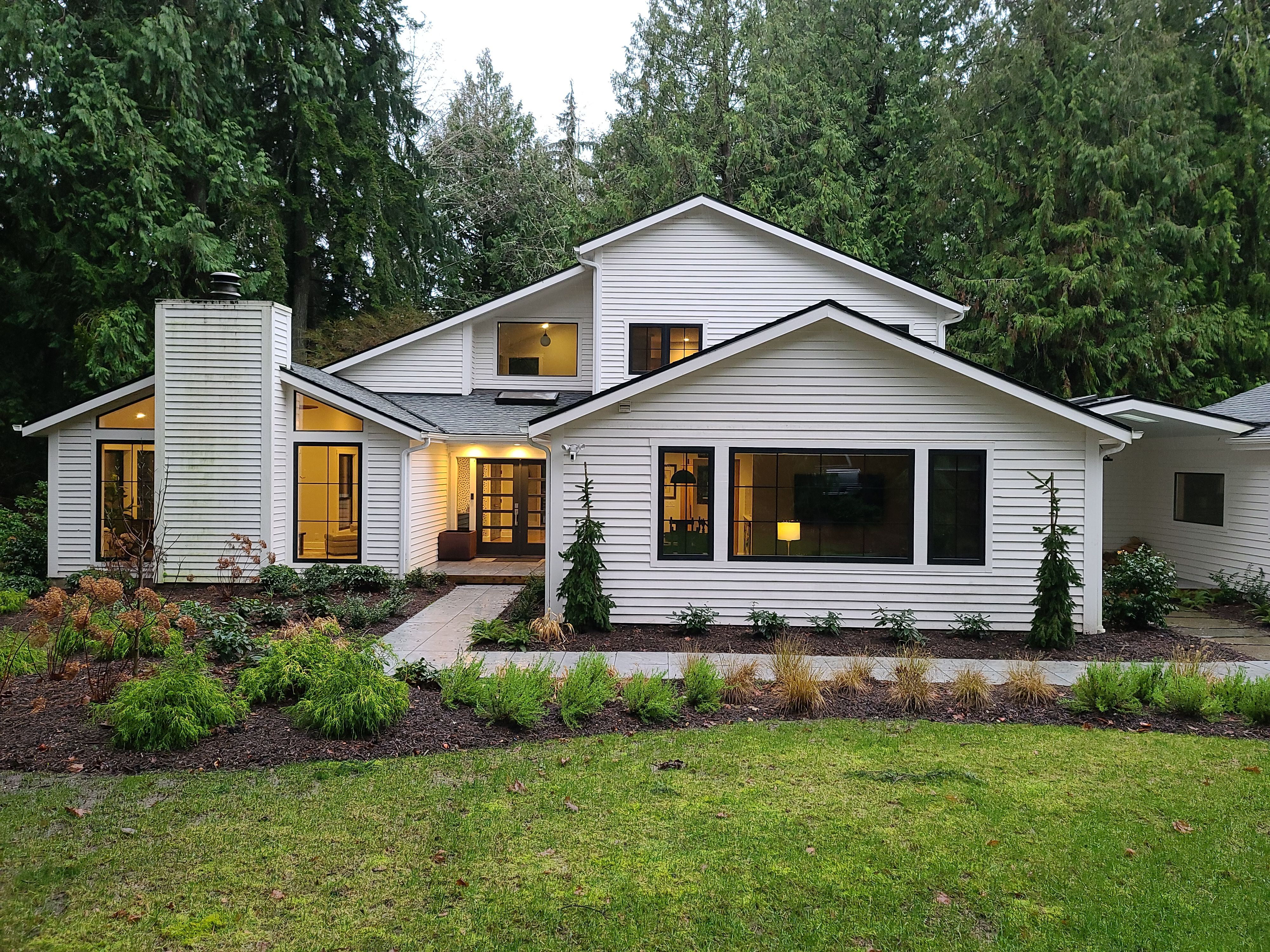Wood Destroying Organisms
This report includes a structural pest inspection embedded within the report. All observations in this report that begin with WDO are a part of a WA State Pest Inspection. Orca Inspection Services LLC employs Dylan Chalk, Licensed Structural Pest Inspector ##65540. Please note that most WDO observations are related to high moisture conditions that could be conducive to mold-like substances. Orca Inspection Services LLC is not a mold specialist and recommends consulting with an industrial hygienist or other mold remediation expert if concerned about mold or indoor air quality.Pest Inspection Standards in Washington State - WAC 16-228-2045 - REQUIRES THAT A DIAGRAM / DRAWING BE PREPARED FOR WOOD DESTROYING ORGANISM (WDO) REPORTS. IF THE PHOTOS AND DESCRIPTIONS IN THIS REPORT ARE INADEQUATE, A DRAWING IS AVAILABLE UPON REQUEST.
Summary
Major Concerns
- A-6 Attic:
The attic and roof cavity ventilation appears to be non-standard: I found no upper roof cavity venting during inspection today, just a few gable vents. Standards today recommend open ventilation levels in a ratio of 1 to 150 of the attic area. Proper roof cavity ventilation is important to keep the attic space cool and dry. I recommend having a qualified general contractor evaluate the level of ventilation on this roof and improve with ridge, soffit, core or other vents as needed. Proper attic ventilation is important for the roofing materials to perform as intended and to reduce chances for condensation problems and heat build-up in the attic
Repairs
- G-3 Grounds:
Eliminate wood /soil contact to reduce the chances for rot and pest damage and repair any hidden rot as needed - see north side. Generally, a 6-inch clearance between soils and wood is recommended. This is often not realistic on older homes, but repairs should be made to get as much clearance as is possible and all contact with the soils should be eliminated.
- ED1-3 Exteriors and Decks:
Inadequate clearances were noted between the roof and the siding. A 2 inch air gap is recommended here to keep the siding off the roof and prevent deterioration of the siding. This installation should be accompanied by step flashings that adequately protect the wall and roof juncture from leaks. Hire a licensed general contractor to further evaluate and repair this condition.
- ED1-7 Exteriors and Decks:
Mild wood decay was noted at the base of the wood chimney chase. I believe this is from the sheathing sticking down past the siding and being unprotected. The base of the sheathing here is swelling and delaminating. This may not be worth correcting. Ideally all exposed sheathing would be trimmed back and the base of the sheathing protected from splash-up dripping from capillary action.
- HCFV-1 Heating, Cooling, Fireplaces and Ventilation:
The condensate for the heating / cooling system in the attic currently employs only one means of discharge - see the air handler in the attic space off the 2nd floor. If condensate stoppage would damage building components, I recommend installing one of the following condensate control methods:
1. Secondary drain to conspicuous point of disposal
2. Auxiliary drain pan with drain to conspicuous point
3. Auxiliary drain pan with detector and fitting
4. Water level detection in primary with interlocked cutout
I recommend having this attic installation further evaluated and repaired as recommended by a qualified heating contractor to ensure reliable control of condensate.
- P-13 Plumbing:
A drain pan has been installed below the water heater, but no drain was noted for the pan. A drain pan is recommended under water heaters that are located in finished spaces or where a leak could damage finishes. A pan without a drain is often of limited benefit / protection. For improved protection from accidental water heater leaks, and where a drain is difficult to install, consider a pan with a moisture alarm and a flood-safe device such as this: Watts Water Heater Leak Prevention.
- A-4 Attic:
The exhaust ductwork for the bathroom and kitchen fans are disconnected in the attic and requires repair to ensure fan exhaust is properly venting to the exterior. Having exhaust fans venting into the attic can cause lead to seasonal condensation and moisture controls problems and could damage the attic building materials. Repair to ensure proper discharge of air to the exterior and be sure exhaust ductwork is insulated to R-8 or better to reduce risks of seasonal condensation.
- A-5 Attic:
The exhaust ductwork for the bathroom fans is uninsulated in the attic space. This can lead to seasonal condensation problems and is less energy efficient. Replace these exhaust vents with insulated exhaust ducts or insulate to R-8 or better.
Recommended Maintenance Items
- ED1-5 Exteriors and Decks:
The wood decking is installed too close to the house siding. This could trap water between decking and siding and facilitate decay. Try and create an air gap here to allow dry potential. The attached illustration shows a proper deck flashing detail and 2-inch gap between the siding and the decking.
- RCG2-7 Roof, Chimney and Gutters:
Evidence of leakage was noted around the skylight - see the closet area in the 2nd floor bedroom. Moisture meter testing and visual observations indicated no active moisture at the time of inspection. Disclose to a buyer any history of leaks or repairs for more information - I suspect this was repaired with the new roof? This should be monitored as conditions can change at any time.
.png)





